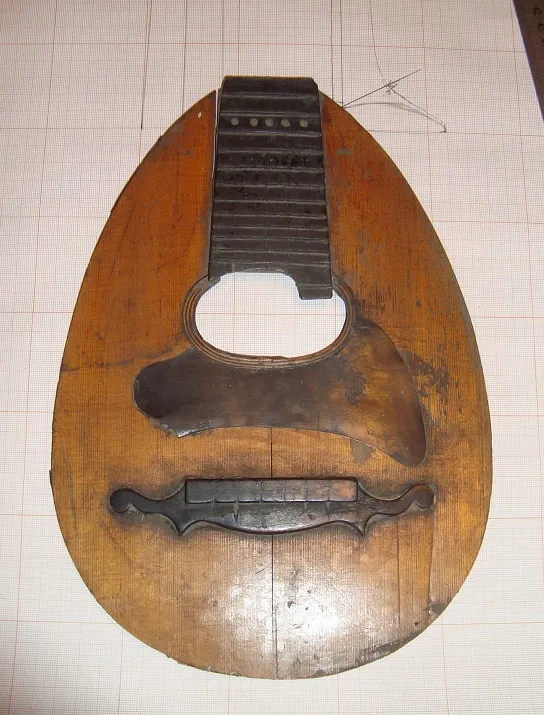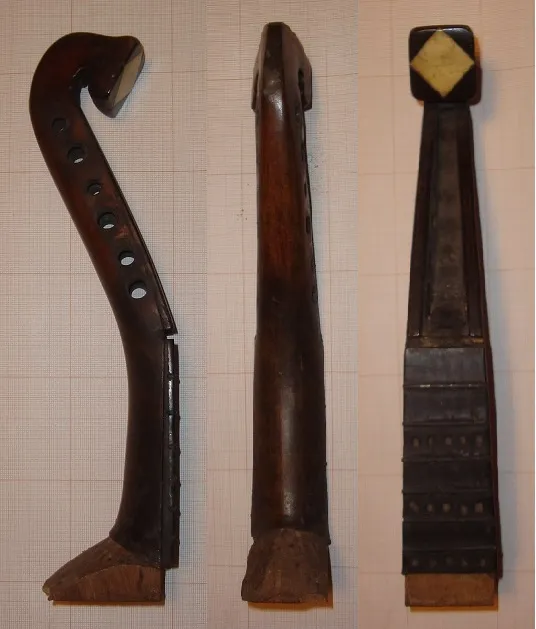|
New Milanese mandolin |
|||
|
Page still under construction.... |
|||
|
The Milanese or baroque mandolin gradually developed
with 6 of gut strings, tuned g b e' a' d" g". This in
turn became the Lombardic mandolin (also called mandore)
with 6 gut strings, still tuned g b e' a' d" g", from
the beginning of the 19th century. It had a rounder body, raised
fingerboard and often an oval sound hole, with no rosette.
Milanese mandolin, a 6 single stringed one, was popular in
Italy. It had a long history and seemed to have already existed
in late 1600. Antonio Monzino of Milan born in 1725 was a
renowned maker of Milanese mandolins for 6 generations and some
said that he is the one who invented this mandolin. |
|||
| My project to build a Milanese mandolin has been built around this instrument, which I was able to buy in pieces, and which I was therefore able to use to make templates for new instruments. | |||

|

|

|

|
|
Originally, gut strings were used for treble 3
strings, and silk wound with iron wire for the 3 bass strings. The
following is a list of strings that can be easily obtained today
for the Milanese mandolin. (Thanks to the
Crane site
for this list)
2.0kg in average, except for 2.5kg on 1st.
For those who want to tune like a guitar (one octave higher).
|
|||
|
|
|
Maple body, spruce top, mahogany/maple neck and ebony fingerboard, either flat or domed. Built in arm guard. Scale length 353mm. Compensated bridge. Length 655mm, Width 280mm, depth 60mm. Strung with bronze wound strings
Larger photos are available. |
|
|
Concert version in rosewood, with extended and domed fingerboard.... Youtube video |
|||